It's a pretty clean state of affairs here at Pattern Fantastique HQ. Minimalism to the max so to speak.
But every now and then some well-placed glamour is required, some extra texture, an extremely feminine feature enough to flood the pleasure centres.
Can you hear a well placed ruffle calling your name?
See below for a comprehensive tutorial on how to make a ruffle. Or click here to view a tutorial on how to insert your ruffle in the Glacial Skivvy.
Placement
There are two key differences in the ruffle placement to consider.
Is the ruffle:
- Continuous? e.g. running the circumference of a hem.
or
-
Inserted? e.g. with a start and finish.
On the edge of a collar that has an opening, over a shoulder but not under the arm or, as featured in our Glacial Tee example, down a neckline and most of the shoulder seam.
Ruffle density and length
The issue most likely to occur with ruffle construction is the additional bulk added to a seam warping the seam structure. It can look awkward and thick.
A few ways of managing the bulk is to limit the gathers. I usually go with 1.7 to 1.9 times the finished length. So when I'm deciding on the length to cut my ruffle pattern piece, I measure the length of the line where it is to be inserted and multiply that by 1.7 - 1.9. Don't feel like you need to be bound by the ratio but it is certainly a safe place to start.
Ruffle shape for inserted ruffles
Tapered ruffle I love a tapered ruffle. Not only does it resolve some finishing issues that a square corner ruffle may have, they are also fun to make!
The pattern piece shaping might not make sense immediately. The first time I made one I very much wanted to make it curved side up. Then the penny dropped...
See below for an image of the resulting ruffle caterpillar. The gathers are placed on the curved edge of the original shape. Once gathered the finished edge bends to the tapered shape. If you look closely the stripe is running along the edge.
Your tapering shape doesn't have to be limited to the example provided below. You can add a much thicker centre to get a full butterfly effect.
The finishing of a square corner can be more complex and many fabrics just won't play along. This linen, bagged out example works well due to it weight and crispness.
Finishing
Your ruffle-edge finish will need to be considered when first planning how to cut it.
Your options are:
-
Double neaten / roll hem
This is a nice finish. The only draw back is the work required to do it. I wouldn't endeavour this finish without a roll hem foot and compliant fabric. Cut this on the straight grain and use the method for wovens only.
Tapered ruffle with double neaten finished edge - woven.
Square edge ruffle with double neaten edges - woven.

-
A folded edge or bagged out (the ruffle is a double layer)
This is the method I use the most, despite adding extra bulk to the seam. The trade-off is worth it as the bulk adds body to the gathers and so it has a nice pop. Also, both sides of the ruffle show the 'right' side of the fabric. It is a great method for vertical ruffles and is suitable for both woven fabric and knits.
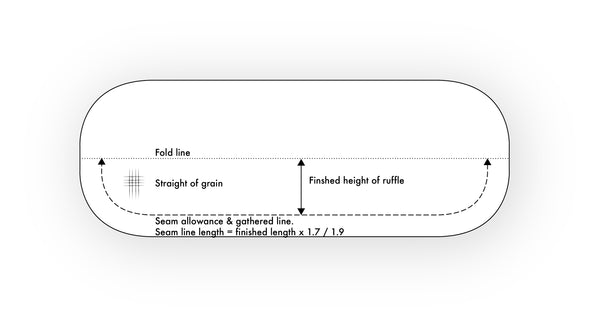
Pic below: a square-edge ruffle with folded edge. Suitable for knits and wovens'.
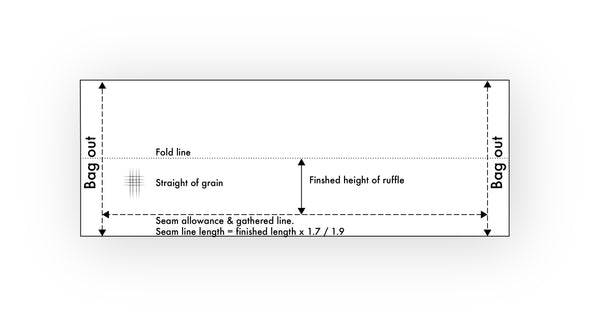
-
Overlocked rolled edge
I avoid this mostly as I am wary of overlocked roll edges looking ugly. But never say never! It ticks a lot of other boxes - ie reduced seam bulk, time saver and it's easy.
-
Raw edge
I love a raw edge finish. This will work on "bias cut" woven fabrics and on many "straight of grain" cut knits. The woven will fray in a cross hatched manner and you won't get long strands of thread pulling away. It's nice and raggy. Give the fabric a wash test to see how it holds up and if it maintains the desired texture.
For knits, cut and see how much your edge will roll. I have found some roll exceptionally well and conceal the raw edge. This roll also makes a tubular finish for the edge, adding some structure to the ruffle. Other knits don't get super excited about rolling and the raw edge won't quite work.
Pic below: tapered ruffle with rolling raw edge for knits
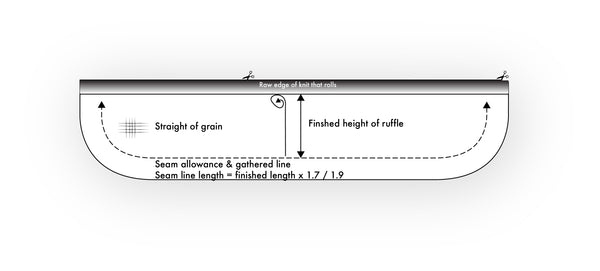
Pic below: tapered ruffle with raw, bias edge for wovens
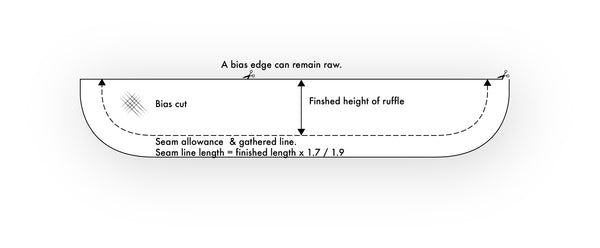
-
Continuous hem ruffles
You can apply the above hemming methods for a continuous ruffle. This continuous ruffle is the simplest solution of all the methods. You will need to include seam allowances to join and make a continuous loop.
Once your ruffle piece is cut, read this tutorial on making gathers.
And view this tutorial on how to insert the ruffle into the Glacial Tee Skivvy.


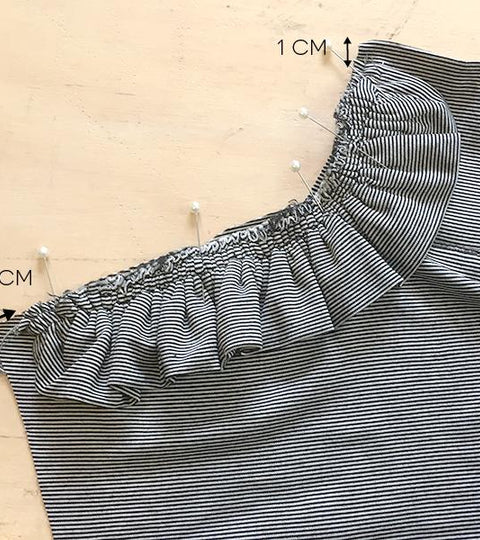

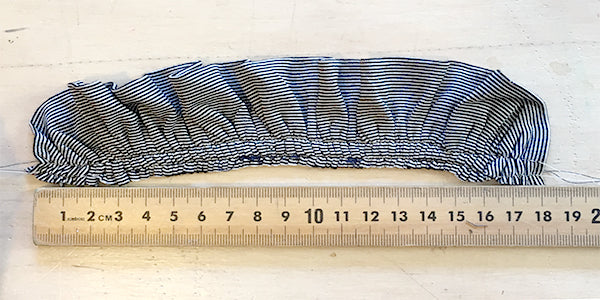

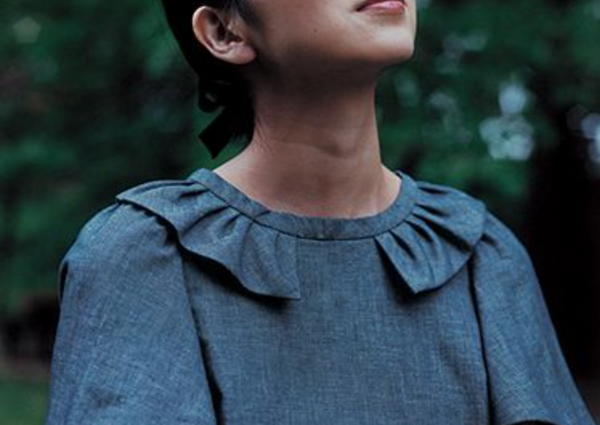
1 Comment
Very well explained.Appreciate it.I love sewing and this helped me a lot. I am new to make ruffle and really like the ruffle caterpillar image and outcome.